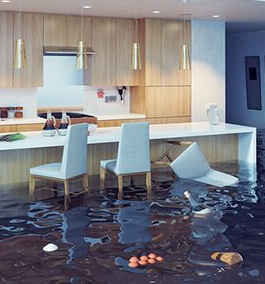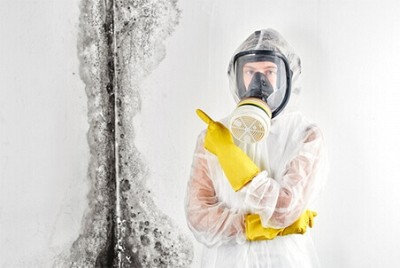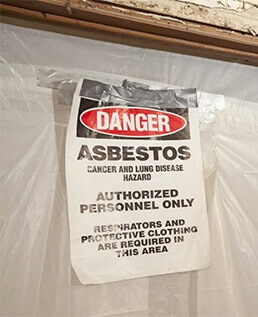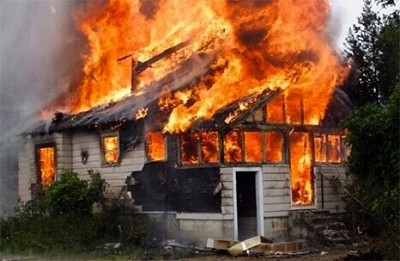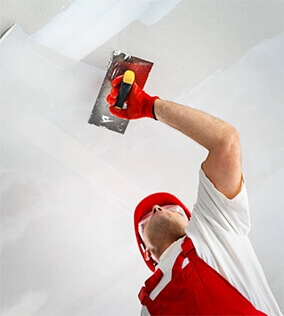Where in Your Property is Most Susceptible to Flood Damage
Posted in Flood & Water Damage, on December 23, 2024
Flooding is one of the most destructive challenges a property owner can face. It can be financially overwhelming to pay for flood damage restoration and emotionally taxing. Knowing which parts of your property are most vulnerable to flood damage is essential to reducing risk, building resilience, and protecting your home or business. It’s worth knowing what water damage in Toronto is capable of such as factors like landscape, how your property is built, and local flood patterns all play a role in these vulnerabilities.
1. Basements and Lower Levels
.jpg) Basements and ground floors are usually the first areas to suffer during a flood. Being below or at ground level makes them prime targets for water intrusion, which can seep through foundation cracks, basement walls, or poorly sealed doors and windows.
Basements and ground floors are usually the first areas to suffer during a flood. Being below or at ground level makes them prime targets for water intrusion, which can seep through foundation cracks, basement walls, or poorly sealed doors and windows.
Flooding in basements often goes unnoticed until the damage is severe. It can weaken the structure, destroy stored belongings, and lead to mold and mildew growth. Electrical systems in basements also heighten the risk of electrocution or short circuits when exposed to water.
What You Can Do:
- Install a sump pump with a backup power source to keep water out.
- Seal any cracks in the foundation and basement floors with waterproof materials.
- Use flood barriers or sandbags to block water from entering doors and windows.
- Raise electrical systems and valuables off the basement floor.
2. Crawl Spaces
Crawl spaces, which are often overlooked, are just as susceptible to flooding as basements where flood damage restoration will be required. These spaces are close to the ground and can easily become waterlogged. When water collects here, it can damage wooden supports and promote mold growth, negatively impacting your home’s air quality.
What You Can Do:
- Add vapor barriers to reduce moisture.
- Ensure proper drainage by sloping the soil away from your home.
- Install flood vents to allow water to flow through without causing severe damage.
3. Garages
Garages, particularly those at ground level, often experience flooding. Water can easily seep under unsealed garage doors. Unlike living spaces, garages are typically not built with robust waterproofing, making tools, equipment, and vehicles stored there vulnerable to water damage. Chemicals stored in the garage can also spill, contaminating floodwaters.
What You Can Do:
- Add weather stripping and flood barriers to garage doors.
- Store items on shelves or in waterproof bins.
- Use raised platforms for tools and other important equipment.
4. Entry Points: Doors and Windows
Doors and windows, especially those in low-lying areas, are common entry points for floodwater. Without proper sealing, even small amounts of water can cause water damage in Toronto, causing long-term damage such as rust, wood rot, and mold growth.
What You Can Do:
- Apply weatherproof seals to doors and windows.
- Install flood-resistant doors and windows if your area is prone to flooding.
- Use temporary flood barriers during heavy rains or flood warnings.
5. Driveways and Walkways
Driveways and walkways can act as channels, directing water toward your home if they aren’t graded properly. Paved surfaces can worsen the issue by preventing water from being absorbed into the ground, increasing the risk of foundation damage.
What You Can Do:
- Use permeable materials like gravel or pavers for driveways and walkways to allow water to soak into the ground.
- Regrade these surfaces to slope away from your home.
- Add French drains or swales to redirect water.
6. Roofs and Gutters
Roofs and gutters are often overlooked as potential weak points in flood prevention. A damaged roof can allow rainwater to seep inside, while clogged gutters can cause water to pool around your foundation, leading to significant issues.
What You Can Do:
- Regularly inspect and repair your roof.
- Clean gutters and downspouts frequently to ensure proper water flow.
- Install gutter guards to prevent debris from clogging.
- Extend downspouts to carry water away from your home’s foundation.
7. Foundations
Your property’s foundation is at constant risk during floods. Prolonged water exposure can weaken the materials, cause cracks, and compromise the stability of your home. Poor drainage around the foundation makes this even worse, allowing water to pool and seep inside.
What You Can Do:
- Grade the soil around your home so water flows away from the foundation.
- Install drainage systems, like French drains, to prevent water from collecting.
- Apply waterproof coatings to the foundation to keep water out.
8. Landscaping and Outdoor Features
The way your yard is landscaped can either help or hinder flood prevention. Poorly designed flower beds, retaining walls, or patios can inadvertently direct water toward your home. Low-lying areas can collect water, causing soil erosion and foundation problems.
What You Can Do:
- Design your landscaping to encourage proper drainage, using plants that thrive in wet conditions.
- Avoid hardscaping features that block water flow near your house.
- Add rain gardens or swales to manage excess water effectively.
9. Plumbing Systems
Plumbing systems are especially vulnerable during floods, as heavy rains can overwhelm sewer lines and cause backups. Leaks and clogs can also create internal water damage.
What You Can Do:
- Install backflow prevention valves to stop sewer backups.
- Inspect and maintain your plumbing system regularly.
- Avoid flushing grease or debris to prevent clogs.
10. Electrical Systems
Flooding poses serious safety risks to electrical systems. Water can damage wiring and appliances, create short circuits, and even spark fires. Flooded electrical systems can also lead to costly repairs and prolonged power outages.
What You Can Do:
Raise electrical outlets, circuit breakers, and appliances above expected flood levels.
- Use waterproof covers for outdoor electrical components.
- Turn off electricity in flooded areas to stay safe.
Canadian Restoration Services Is The Service For You
Flooding can affect many areas of your property, from the basement to the roof. By identifying vulnerable areas and taking proactive steps, you can significantly reduce the risk of flood damage. Simple measures like proper drainage, waterproofing, and regular maintenance can make a huge difference. Additionally, securing flood insurance provides peace of mind and financial protection. While no property can be completely floodproof, careful planning and preparation can greatly enhance your home’s resilience and recovery in the face of flooding. Contact Canadian Restoration Services for assistance or advice.


